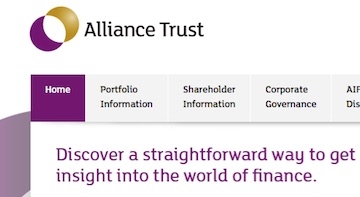Pension savers could lose up to £58,500 in tax relief due to the “annual allowance minefield”, a savings firm has estimated.
Alliance Trust Savings warned that people could miss out on substantial tax relief due to confusion around the new annual allowance taper rules which come into force this month.
The firm pointed to the current situation where savers benefit from tax relieved pension accrual up to the annual allowance of £40,000 for the 2016/17 tax year.
But it pointed out that from 6 April 2016, individuals with “adjusted income” greater than £150,000 will have their annual allowance reduced by £1 for every £2 of excess income. An individual with adjusted income of £210,000 or more will have their annual allowance tapered down to the minimum of £10,000 for that year.
Brian Davidson, senior pensions proposition manager, Alliance Trust Savings, explained that individuals, including additional rate taxpayers affected by the taper, can carry forward any unused allowance from the previous three tax years to increase the tax relief they receive.
An individual earning £210,000 or more making a personal net contribution of £8,000 in 2016/17 will benefit from £2,000 basic rate tax relief giving a gross payment into their pension of £10,000, plus further £2,500 tax relief via self-assessment as their top rate of income tax is 45%, according to Alliance Trust’s estimations.
Mr Davidson said: “The tax rules around pensions can be complex and with so much radical change to pensions over the last few years, some savers could easily miss out on tax relief in the new tax year.
“When the unclaimed tax relief could be as high as £58,500, it can make a substantial difference to retirement savings. When people realise that they are affected by the tapered annual allowance they could be forgiven for assuming that the carry forward rules will not apply which could be a costly error.”
He said: “In addition to the tapering that can reduce an individual’s annual allowance below the full £40,000, there is also the Money Purchase Annual Allowance, which, when it applies, also caps an individual’s ability to make tax efficient contributions to a money purchase pension, such as a Sipp.
“The Money Purchase Annual Allowance may be triggered depending on how you have taken an income from your pension. However, unlike the tapering, once the Money Purchase Annual Allowance applies, it is no longer possible to utilise carry forward.”
The firm used the following example to illustrate its warning:
- A self-employed individual has total earnings in 2016/17 of £400,000.
- He has made no pension contributions since March 2013 so has unused annual allowances of £130,000 to carry forward.
- If he decides to make the maximum pension contribution of £140,000, the position would be as follows:
· Contribution (made net of 20% relief at source of £28,000) £ 112,000
· Balance of additional rate income tax reclaimed from HMRC £ 35,000
· Net cost of £140,000 pension contribution £ 77,000
· Total overall tax relief (£28,000 plus £35,000) £ 63,000
Alliance Trust said that by maximising the use of carry forward of unused annual allowance in this example the individual has benefit from additional tax relief of £58,500 (the difference between the £4,500 and the £63,000).

